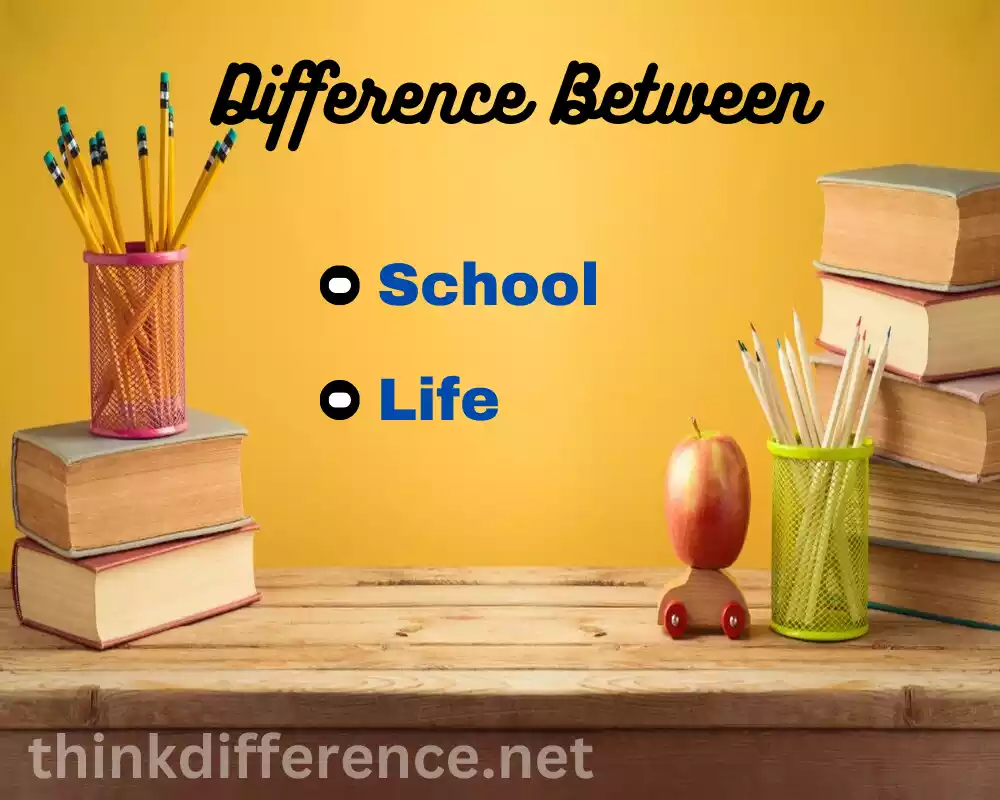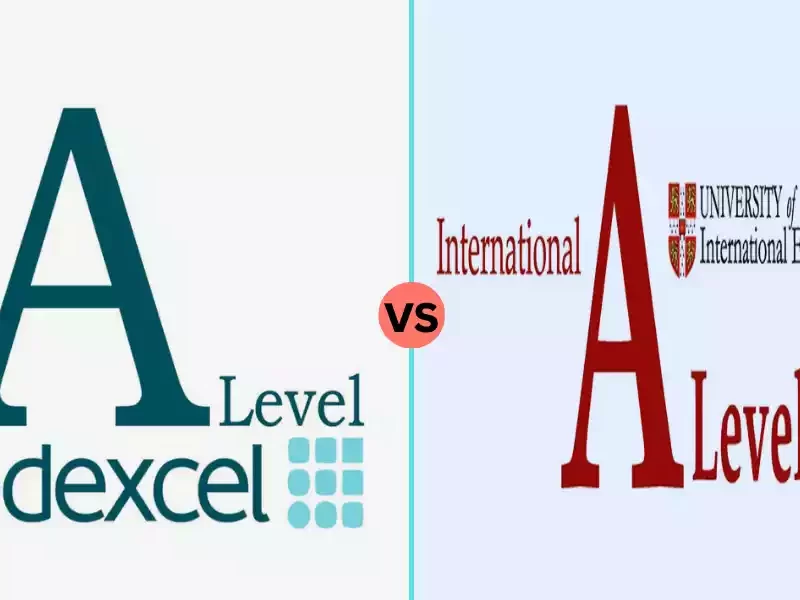Definition of School and Life
Today, in this post you will learn the key difference between School and life. Before jumping into the main point let’s learn about these two terms individually.
School:
School refers to an organized institution or educational establishment where students receive formal instruction, guidance, and acquire knowledge and skills in various subjects. It typically follows a structured curriculum, employs teachers and educators, and adheres to specific educational standards and systems.
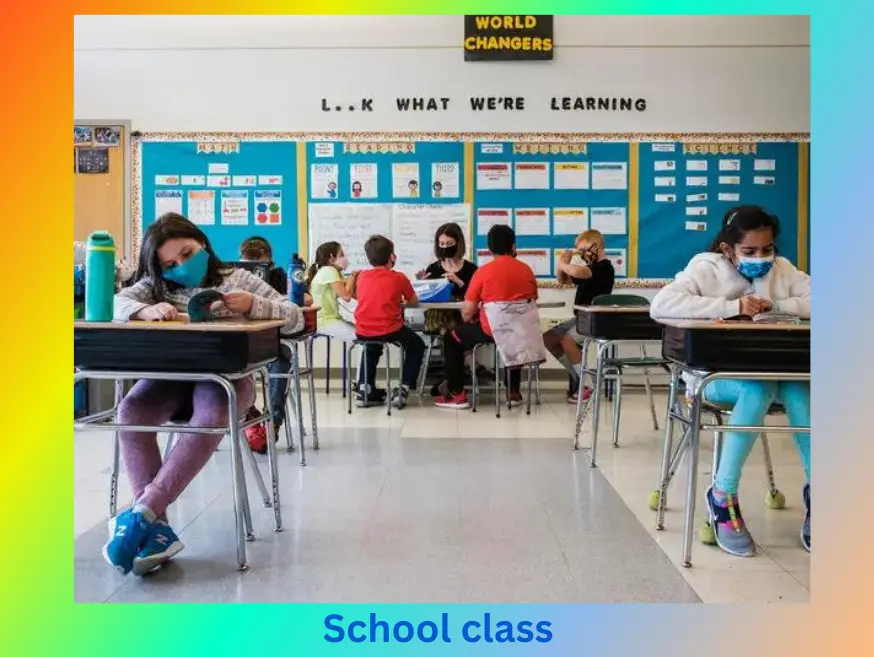
School environments aim to equip children for life beyond school by inculcating academic knowledge, social capabilities and critical-thinking capabilities in students.
College:
Life refers to our human experience and all its events and circumstances that shape it, including relationships, work and personal growth. Life provides diverse challenges and opportunities – unlike formal school structures – which allow people to grow and adapt based on unique situations they face.
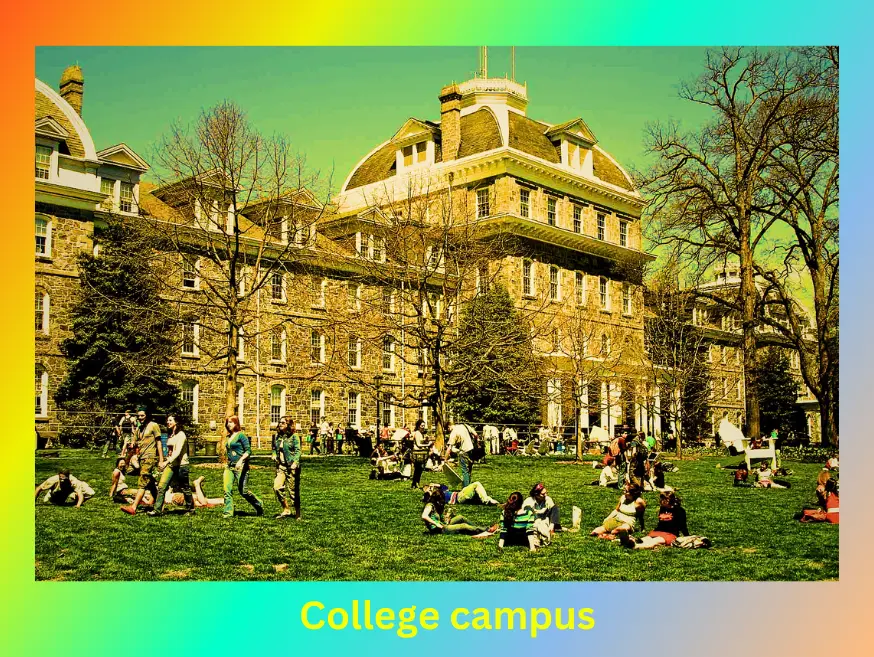
Importance of understanding the difference between School and Life
Understanding the difference between school and life is crucial for several reasons:
- Real-world Preparation: School provides a structured and controlled environment that focuses primarily on academic learning. Life extends beyond textbooks and exams. By understanding the difference, individuals can recognize that life presents a wide array of experiences, challenges, and opportunities that cannot be fully replicated within the confines of a school. Knowledge like this equips individuals with the abilities and adaptability needed to successfully negotiate complex situations in real life.
- Holistic Development: While school emphasizes academic achievement, life encompasses personal, social, emotional, and professional growth. This distinction allows individuals to expand their perspectives and focus on various aspects of life such as interpersonal abilities, emotional intelligence and resilience – giving a holistic view of personal development that transcends formal education.
- Setting Realistic Expectations: Understanding the difference between school and life helps individuals set realistic expectations for themselves. In school, there are clear goals, timelines, and assessments that define success. Life does not adhere to such rigid structures. By recognizing this distinction, individuals can avoid undue stress and disappointment by understanding that life is full of uncertainties and that success is subjective and multifaceted.
- Self-Discovery and Purpose: Life provides ample opportunities for individuals to discover their passions, interests, and purpose. Understanding differences enables individuals to explore varied experiences, engage in self-reflection and uncover their individual strengths and values. Embarking upon an empowering self-discovery journey and aligning their actions with their true life purpose.
- Lifelong Learning: School is just a fraction of an individual’s lifelong learning journey. Recognizing the distinction between school and life instills a mindset of continuous learning beyond formal education. It encourages individuals to seek knowledge and growth in various ways, such as through work experiences, personal challenges, hobbies, travel, and interactions with diverse individuals. This understanding helps foster an appreciation of learning that goes well beyond classroom walls.
Understanding the differences between school and real life helps individuals navigate its complexities with ease. They can embrace holistic development, set reasonable expectations, find their purpose, and engage in continuous learning – ultimately leading to fulfilling lives with personal growth, meaningful connections and an enhanced awareness of global issues.
Differences Between School and Life
Environment and Setting
- School:
- Structured environment: School provides a controlled and structured setting with specific rules, routines, and procedures.
- Classroom-based: Learning primarily takes place within the confines of a classroom, where students interact with teachers and peers.
- Life:
- Real-world diversity: Our world is an expansive place, home to diverse ecosystems.
- Diverse experiences: Individuals encounter a variety of situations, challenges, and people outside the controlled environment of a classroom.
Curriculum and Learning
- School:
- Prescribed curriculum: Schools follow a predetermined curriculum that outlines the subjects, topics, and learning outcomes for each grade level.
- Subject-focused learning: Students study different subjects separately, with specific lessons and assignments dedicated to each subject.
- Life:
- Self-directed learning: Individuals have the freedom to develop their knowledge and abilities according to their personal goals, interests and curiosities.
- Holistic learning: Life offers opportunities to learn from a wide range of experiences, including work, relationships, personal challenges, and hobbies.
Evaluation and Success
- School:
- Grades and assessments: Students are evaluated based on their performance in exams, tests, projects, and assignments, which result in grades scores.
- Academic achievement: Success in school is often measured by the grades obtained and meeting educational standards set by the institution.
- Life:
- Personal Achievements: Success can mean different things for different people and should be judged according to individual accomplishments, growth and fulfillment.
- Happiness and fulfillment: Life success often corresponds with happiness, satisfaction and feeling of purpose in many facets of one’s life – relationships, careers or pursuing personal objectives being examples.
Social Interactions
- School:
- Peer groups: Students interact and form relationships with their peers, often within the same age group or class.
- Teacher-student dynamics: Students have hierarchical relationships with teachers, who provide guidance, instruction, and evaluation.
- Life:
- Diverse relationships: As part of daily life, you will encounter people of various backgrounds, roles and ages, this includes family members, friends, coworkers, mentors and community members.
- Networking and community interactions: Individuals engage in social interactions that extend beyond the classroom, building connections and fostering social skills.
Time and Structure
- School:
- Fixed schedule: School follows a structured timetable, with specific hours and days dedicated to learning activities and classes.
- Rigid routine: Students adhere to a daily routine that includes attending classes, completing assignments, and following school-related obligations.
- Life:
- Flexibility: Life offers more flexibility in terms of scheduling and time management, allowing individuals to prioritize their activities and responsibilities.
- Adaptability: Individuals need to adapt to changing circumstances and manage their time effectively based on personal and professional commitments.
Understanding the differences between School and Life helps individuals recognize the unique characteristics, challenges, and opportunities that each domain presents. It enables individuals to navigate their educational journey while embracing the broader context of personal growth, real-life experiences, and lifelong learning outside the structured environment of school.
Impact on Personal Growth and Development
The difference between school and life has a significant impact on personal growth and development. Understanding this impact helps individuals navigate their educational journey and embrace personal growth in the broader context of their lives.
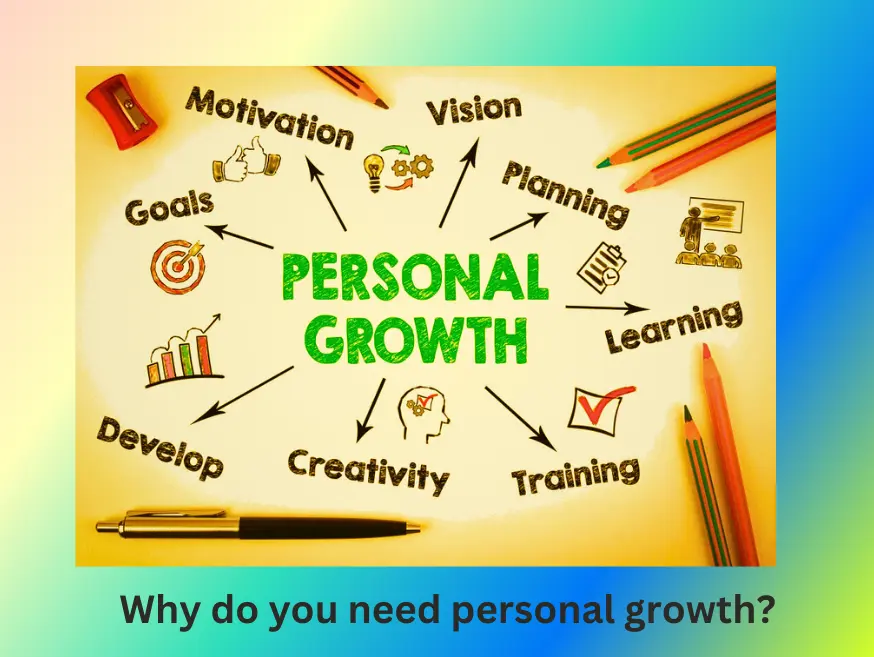
Here are some key aspects of how school and life contribute to personal growth:
1. Challenges and Learning:
School:
- Academic Challenges: School presents academic challenges that require students to think critically, problem-solve, and develop discipline and perseverance.
- Studying Discipline: School teaches students the importance of time management, organization, and self-discipline in order to meet academic demands.
Life:
- Personal Setbacks: Life presents personal challenges, setbacks, and obstacles that require individuals to adapt, learn resilience, and develop coping mechanisms.
- Emotional Intelligence: Empathy, emotional intelligence and self-awareness can be improved when handling emotions and relationships appropriately.
2. Practical Application:
School:
- Theoretical Knowledge Application: School provides a foundation of theoretical knowledge that can be applied in practical settings, such as problem-solving or scientific experiments.
- Skill Development: School helps develop skills and competencies that have practical applications, such as writing, public speaking, or analytical thinking.
Life:
- Real-World Problem Solving: Individuals have the chance to use their creativity, knowledge and skills in solving real world issues.
- Decision-Making: Decision making is an integral component of life. Decisions affect our personal and professional lives equally.
3. Personal Identity and Purpose:
School:
- Educational Exploration: School exposes students to various subjects, disciplines, and extracurricular activities, allowing them to explore their interests and potential passions.
- Academic Goals: Setting and pursuing academic goals in school helps individuals develop a sense of direction and purpose related to their educational endeavors.
Life:
- Self-Discovery: Life offers individuals plenty of chances to explore their values, interests and passions – an essential step toward developing self-identity.
- Purposeful Pursuits: Engaging in meaningful activities aligned with personal values and passions in life fosters a sense of purpose and fulfillment.
4. Lifelong Learning:
School:
- Foundation of Learning: School establishes a foundation of knowledge, skills, and learning habits that form the basis for continuous education and lifelong learning.
- Critical Thinking: School encourages critical thinking, analysis, and inquiry skills that serve as a basis for ongoing intellectual growth.
Life:
- Learning from Experiences: Life provides ongoing opportunities for experiential learning, expanding knowledge, and developing new skills outside of formal educational settings.
- Personal Growth Mindset: Embracing a mindset of lifelong learning in life nurtures curiosity, adaptability, and a desire for personal growth and development.
Recognizing the influence school and life have on your personal growth will enable you to capitalize on all the challenges and opportunities each presents – this will allow you to become an enriched individual with broadened perspectives, emotional intelligence, and practical abilities. Integrating lessons and experiences from both school and life enables individuals to thrive academically, professionally, and personally.
Conclusion
Finding the balance between school and life outside school can be challenging for some students, yet this is essential to their overall development and academic achievement. Students can achieve both by managing their time wisely, engaging in extracurricular activities, and creating positive relationships – education is more than grades; it’s an experience that shapes individuals into successful adults with bright futures ahead of them.

